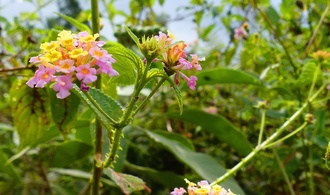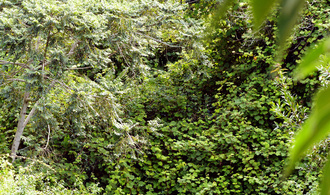Invasive Alien Species, a legal framework poorly suited to a complex problem
Written by Modified on the
Man has acquired the power to completely transform his environment, disrupting the balance of ecosystems, often irreparably. Man’s introduction of new species into a given area is the second most significant threat to biodiversity, particularly in islands which are more sensitive to environmental disturbances. In Reunion Island, for example, where 30% of original habitats are still present, invasive alien species (IAS) have become the leading cause of biodiversity loss.
This risk is increased by increased global trade, transport, tourism and climate change. The devastating consequences of IAS are all of ecological and economic order and yet the subject remains poorly known. It is therefore vital to prioritize the control of invasive alien species for the preservation of ecosystems. Loïc Peyen, a doctoral student in public law at the University of Reunion Island, has examined the legal framework governing IAS and highlighted the regulatory inadequacies arising from the complex ecological reality. Here, we review them.
An inadequately framed definition on the regulatory front
In October 2014, the European Union (EU) legally defined IAS as an alien species whose introduction or spread has proven to be a threat to biodiversity and associated ecosystem services, or one that harmfully affects biodiversity and the said services[1]. In practice, interpreting the regulation, which entered into force on 1 January 2015, is not easy.
For instance, according to Peyen, there would be no legal correspondence in France between "exotic" and "non-indigenous". The European definition distinguishes between exotic species that are not concerning and those that are considered invasive, or 10 to 15% of the 12,000 species in the EU. According to the Groupe Espèces Invasives de La Réunion (GEIR), Reunion Island there are 2000+ introduced plants species of which 151 are currently considered invasive. As regards wildlife (excluding insects and molluscs), Reunion Island has 48 native species against 70 introduced, already present in the natural and urban environments, including 11 species (namely 15%) currently known to be invasive[2]. In addition, a study by the French Committee of IUCN indicates that half of the 100 of the world’s most invasive species are present in overseas territories[3].
A legal framework inappropriate for the unpredictable ecological reality
Regulation of invasive alien species is based on two components: the first is preventing their introduction and the second relating is managing them once established.
- Prevention: an inadequate method in both France and Europe
In France, article L.411-3 of the Environmental Code provides for the development of a list of "non-native" species, fixed by order, prohibiting the willful, negligent or reckless introduction thereof into the wild. To be effective, this negative list system requires prior knowledge of any species that may cause ecological imbalance in a defined ecosystem. But nature is characterized by unpredictability due to the great diversity of species and interactions, making the issue of IAS complex to manage.
European regulations also provide for the implementation of a list of invasive alien species in the EU. This comprises species alien to EU territory, excluding overseas regions. This reference to "EU territory" does not seem to reflect the national and local diversity of ecosystems. The list method becomes even more dubious when it is considered that the competent authority in this matter is at a national level and not decentralized services. It suggests a potential inflexibility on a local scale concerning particularly vulnerable natural environments such as overseas territories where, although one may draft regional lists, these can only be validated at the national level.
An exception to the rule against the introduction of an IAS exists in French law: an introduction may be authorized for agricultural, fishery or forestry reasons or for general interest after evaluation of the consequences. Furthermore, French legislation does not apply to agricultural crops or to domesticated animal species, which again raises the specter of potential invasions.
The preventive arm included a repressive component that is also ineffective for the above reasons. Since 2013, anyone having deliberately introduced animal or plant species into the natural environment is punishable by one year’s imprisonment and a fine up to €15,000 for violation of the provisions of Article L.411-3 of the Environmental Code. This is based on the list of legally recognized IAS and on the intentional nature of the offense; what about the introduction of exotic species not in the list or the unintentional introduction of a listed species?
- Restoring the ecological balance after the introduction of an IAS
While the adage "prevention is better than cure" is fashionable, it is often the case that we have to manage the proliferation of an IAS after its introduction into a new territory. If preventive action is difficult, the legal options available to restore the balance of an invaded ecosystem are even more restricted. Indeed, Article L.411-3 of the Environmental Code states that the administrative authority may undertake to capture, collect, confine or destroy specimens of the introduced species.
There again, this only applies to species on the list established under the provisions of the Environmental Code and does not apply to cultivated or domesticated species. When it does occur, measure consists of population control of the invader by direct or indirect means, such as hunting rights. Note that in French law, this is a possibility and not an obligation. In addition European Regulation N °1143/2014 provides an obligation to eradicate the invader from the beginning ofthe invasion, providing it is on the list of IAS established by the EU.
The findings of Loïc Peyen in his December 2014 article show that the regulations governing IAS need to be improved for the effective management of this important threat. A new legal framework to better take ecological reality into account is a challenge which remains to be met.
Management of invasive alien species in Madagascar, interview with Loïc Peyen
Bio&Agri: What was the purpose of your mission to Madagascar in early 2015?
Loïc Peyen: This was to compare the approach of the French and Malagasy laws relating to invasive alien species, with the help of Zo Aina Fanomezantsoa Andriamampianina, a doctoral student in private law at the University of Antananarivo.
B&A: What are the main differences between the legislation of both countries?
LP: The Malagasy system is much less formal than the French system. The list system is present in Madagascar just as in France but it is only indicative. Inclusion on the Malagasy list is not a mandatory requirement to act, unlike the French system. It is therefore quite possible to take action to eradicate a species if it is considered harmful.
B&A: What is the legal status of IAS in Madagascar?
LP: There is no specific legal status for IAS. Regulation is based on rules relating to harmful species and organisms, which is not quite the case in France where a distinction is made between alien species, harmful species and harmful organisms.
B&A: What regulations are in force in Madagascar?
LP: There are many legal rules applicable in Madagascar. The latest is the law No. 2015-003 of 20 January 2015 on the updated Malagasy Environmental Charter. This is framework legislation aimed at laying down the general principles concerning the protection of Madagascar's natural resources and the control of species that could threaten ecosystems. This law encourages measures to be taken to prevent introduction of these species. There are no other formal rules on this point.
To find out more:
- Loïc Peyen’s article (in French), a Public Law PhD student at the Université de La Réunion, « Le droit des espèces exotiques envahissantes ou la difficile protection de l'équilibre écologique », d. 01/12/2014, Environmental law, n°229, P.415 ;
- A list of invasive species in Reunion Island ( GEIR) (in French) ;
- A list of invasives pecies in Reunion Island from the Conservatoire Botanique National des Mascareignes Website (CBNM) (In French). This list provides detailed and illustrated listings by species.
[1]
Règlement (UE) No 1143/2014 du Parlement Européen et du Conseil of 22 October 2014 on the prevention and management of the introduction and spread of invasive alien species.
[2]
Derived from the GEIR website accessed in May 2015.
[3]
Initiative on invasive alien species in overseas territories by the IUCN.



